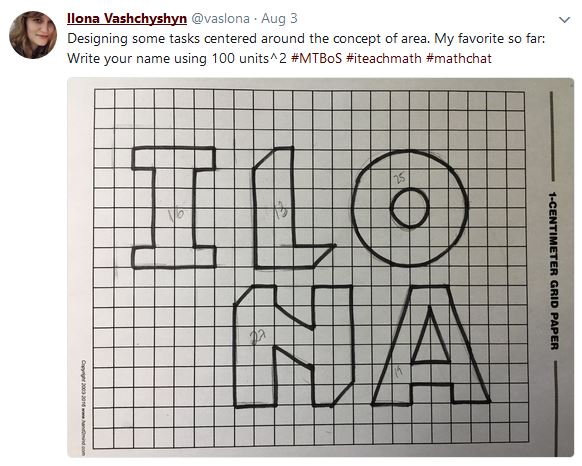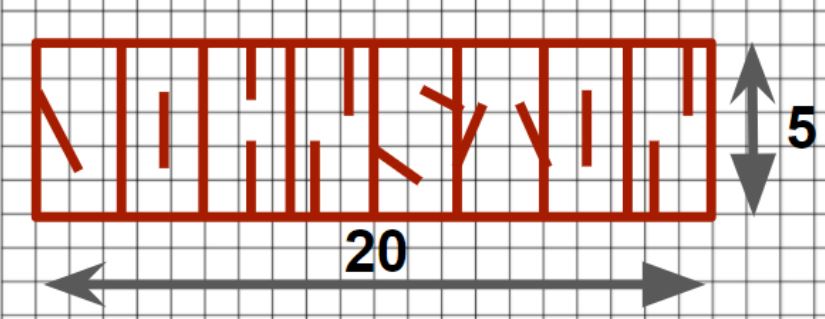We just completed the first week of school, and I taught a middle school Geometry course in a distance learning/face-to-face hybrid environment. My students were spread across several campuses and I physically taught the class from a different campus each day. This allowed the students to have face-to-face class time with their teacher on the days I visited their campus, while students at other campuses joined us through a video conference. We learned a lot about this setup this week, and I believe we had some major successes.
The classroom activities we chose for the first week really set us up for success. We used excepts from Jo Boaler‘s Week of Inspirational Math activities, available from YouCubed.
- We were able to set expectations for the class, stressing qualities such as creativity, perseverance, and investigation.
- Students and teachers had the opportunity to become comfortable with each other and the technology environment of the classroom.
- Boaler‘s videos and lessons allowed us to discuss growth mindset norms such as the value of mistakes and the notion of math giftedness.
One of our ongoing challenges is how to structure the beginning and end of classtime. Campus bell schedules vary slightly and students sometime need a little extra time to log on and join the class. I’ve tried to find warm-ups that are engaging, time flexible, and optional (I mean if a student joins late and misses the warm-up, it’s not the end of the world).
A perfect example is this challenge from Ilona Vashchyshyn posted on twitter. Check out an image below:

The problem is beautiful: you can pose the problem in a short statement (less than 140 characters, in fact!), but you can spend hours exploring the challenge. I allowed students to work on this challenge for a few minutes while everyone logged into the class and got situated. Then I kicked it up a notch by showing they my solution:

As I hoped, some students said I had cheated and this solution wasn’t fair. I took the opportunity to talk about perseverance and fully exploring the great math we would encounter this year! I can come up with the “easy” solution that checks all the boxes, or I can challenge myself to learn and grow. I was thrilled that the conversation paid dividends within days when students chose challenging numbers to start their Hail Stone Sequences.
